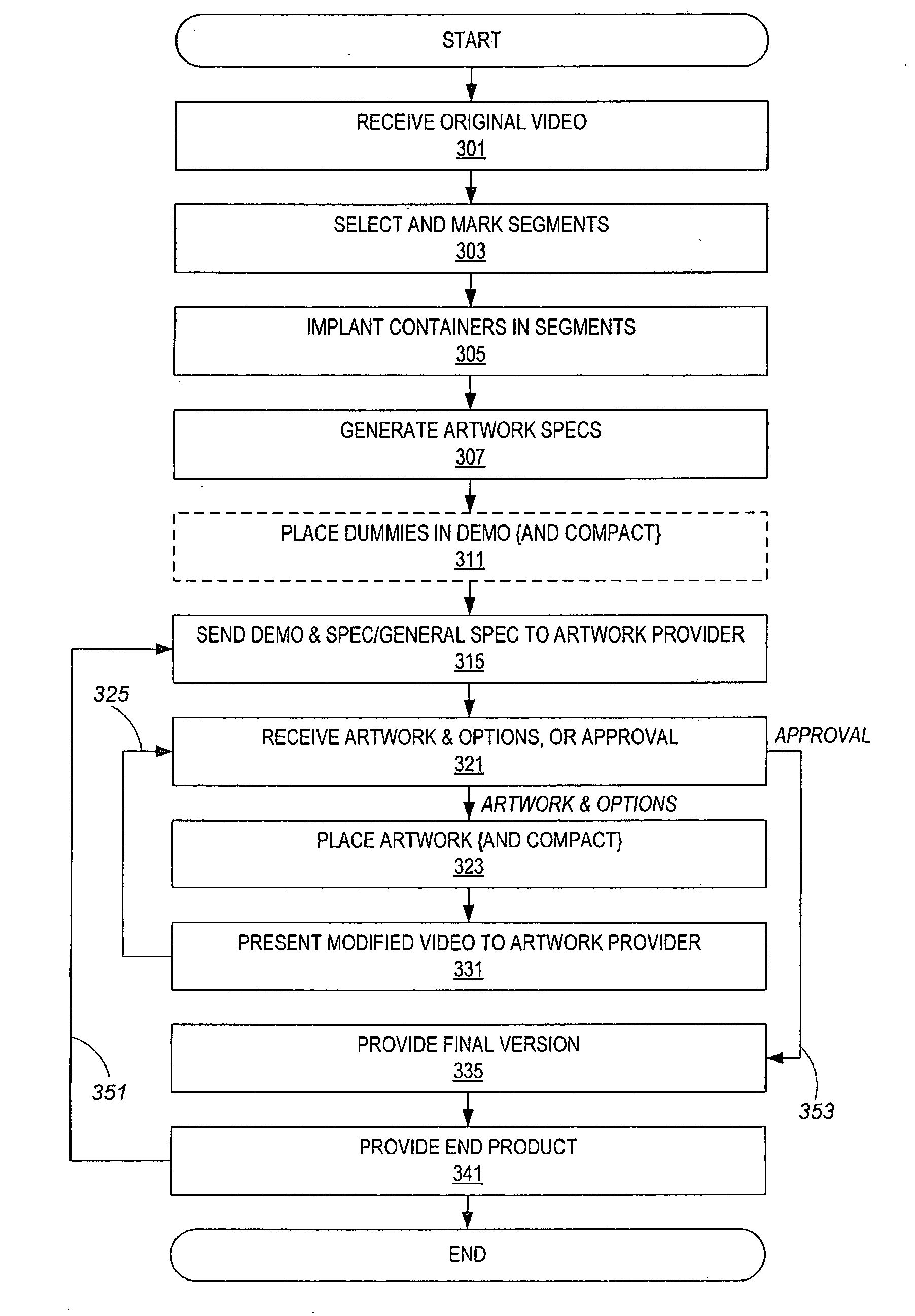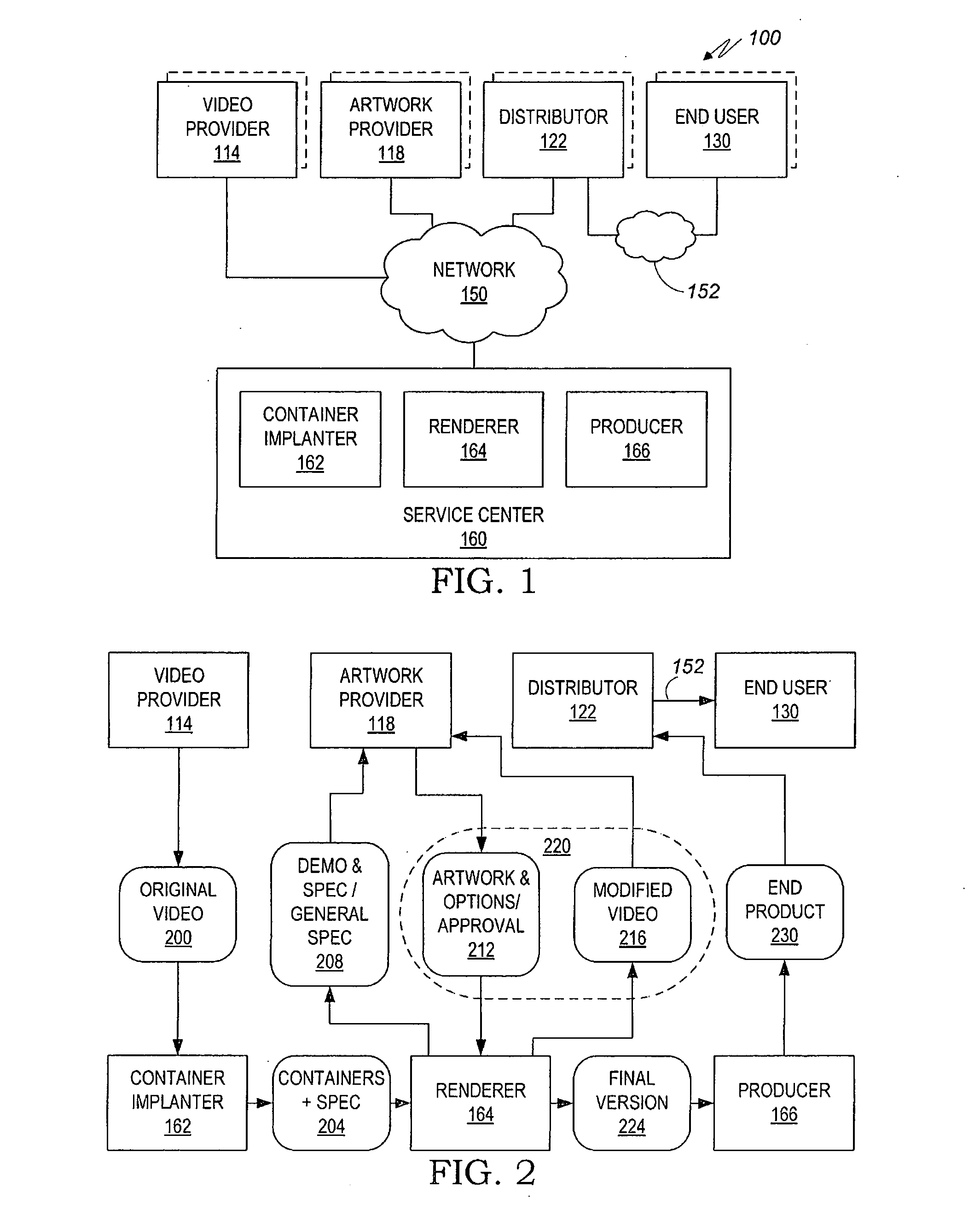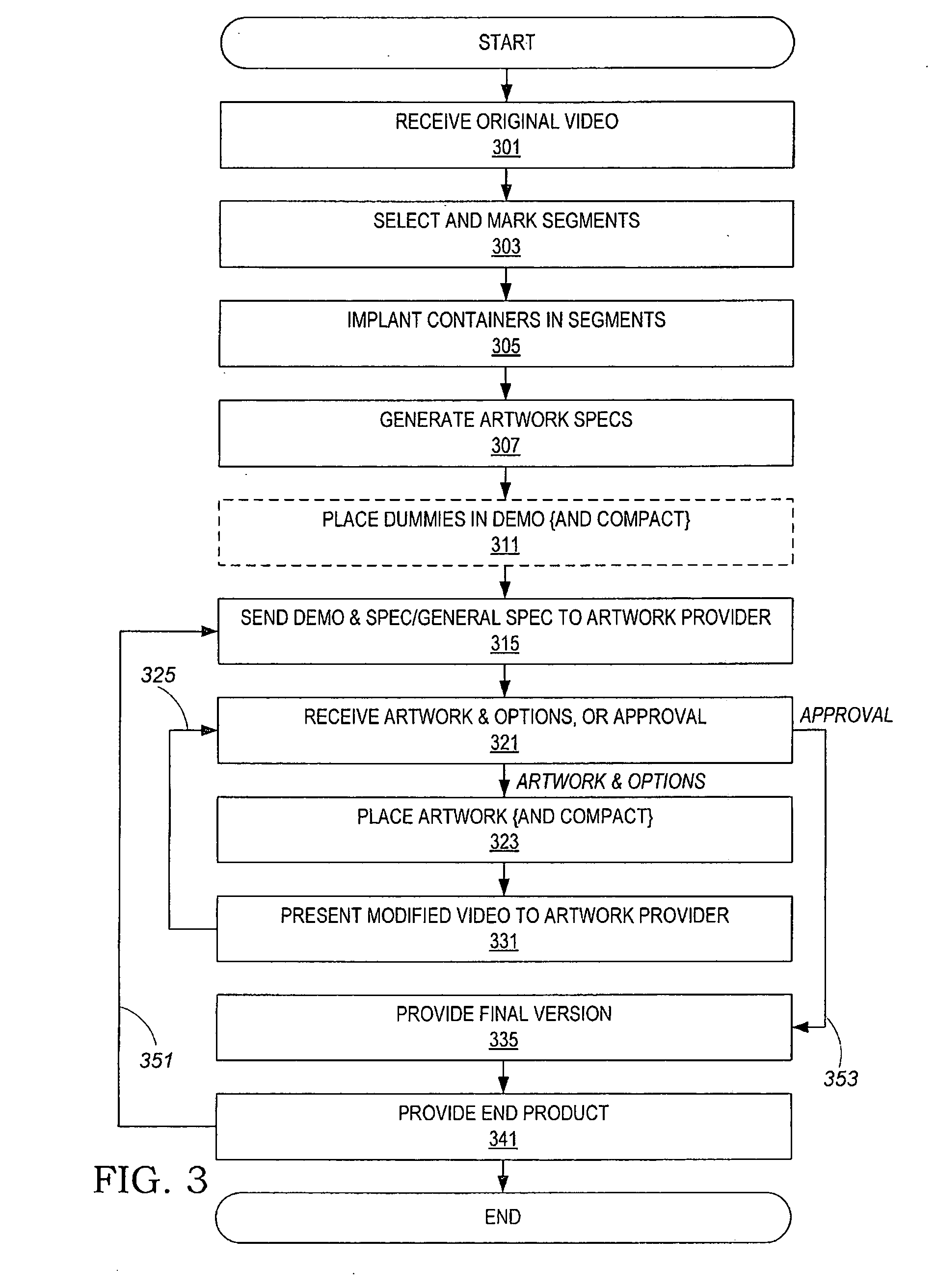[0014]According to a third aspect, preferred embodiments of the present invention provide systems and methods that allow artwork providers to place their selected artwork pieces within a video without needing the tools and skill for content placement and / or without devoting the time and effort required for conventional offline content placement. This is done by presenting a modified version of the video, including embedded artwork pieces (that can be dummies), to the artwork provider and allowing the artwork provider to provide respective artwork pieces, which are automatically and instantly placed within the respecting containers replacing the previous embedded artwork This offers the artwork provider an interactive experience of virtual artwork placement without being involved with the associated complexities and labor, which have already been resolved at the stage the container implantation.
[0015]For conserving bandwidth and saving time during iterations of experimenting with artwork placement, the demo version and / or the modified video are optionally further compacted, in comparison with the original video, by excluding parts of original video, preferably those that do not include containers, and / or applying a lower resolution than the original video, and / or reducing the
color space, and / or applying excessive video compression. In an extreme case, the compacted demo / modified version can be reduced to a number of still images, each still image showing a selected frame representative of a marked video segment, showing the artwork (that can be dummy in the case of a demo) embedded inside.
[0017]The same demo can preferably but not necessarily be sent to several artwork providers, who place their own artwork within the respective containers until reaching their respective final versions. Additionally or alternatively, a single artwork provider can employ the
system and process described herein for creating multiple different editions, for example for advertising different products. This distributes the costs of the relatively-expensive acts of segment selection and marking and container implantation, over a plurality of artwork placement instances, which is an advantageous aspect of preferred embodiments of the present invention. Instead of sending exactly the same demo to several artwork providers, demo versions can be customized for specific artwork providers, for example by selecting dummies that bear the logo of the prospective artwork provider or selecting dummies that use artwork provided by the prospective artwork providers. In some cases, a demo customized for an artwork provider by utilizing artwork sent by that artwork provider, can be good enough to require no further changes thus providing a basis for the
final version. In other cases, it will take multiple iterations of artwork placement until the artwork provider is satisfied and approves the currently embedded artwork for the
final version.
[0019]Thus, according to preferred embodiments of the present invention, there is provided a method, service center and
software product, for embedding artwork in videos, the method starting with preparing an original video for placement by obtaining the original video, marking a segment of the original video and implanting a container within the marked segment. This provides a reusable container that can be utilized many times for placing content within the marked segment. Each such content placement is implemented by selecting an artwork piece that matches the container according to the container specs, and then automatically placing the selected artwork piece within the container, which effectively renders a modified video segment that visually shows the artwork piece animated in accordance with the marked segment. Such repetitive sessions of artwork placement within the container can be used for two purposes: (1) for allowing an artwork provider to interactively select and adapt that artwork for the marked segment; and (2) for allowing different artwork providers (or the same artwork provider at another time), to generate different editions based on the same original video; for example, for advertising different products.
[0022]Demo versions and / or modified versions can be further compacted, in comparison with the original video, by using techniques such as excluding at least one part of the original video, representing a video segment by a representative still image, applying a lower resolution than the original video, reducing the
color space, or applying excessive video compression.
[0023]When an artwork provider approves a modified video, a final version is generated wherein all current artwork pieces are embedded within the respective containers. The final version is preferably a conventional video, viewable by standard video players. The final version is sometimes further transformed to an end product adapted for a specific
distributor, for example by reducing the size and
color space and changing the aspect ration of the video if it is to be viewed on
mobile phone screens.
 Login to View More
Login to View More  Login to View More
Login to View More 


